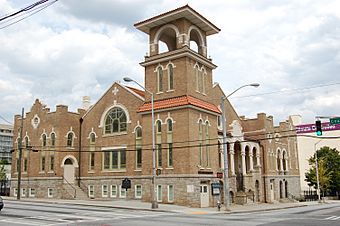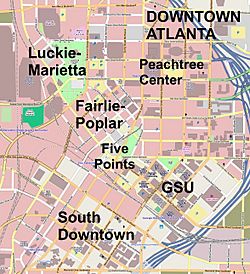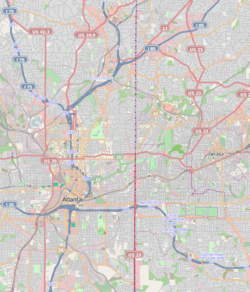First Congregational Church (Atlanta) facts for kids
|
First Congregational Church
|
|

First Congregational Church (2012)
|
|
| Location | 105 Courtland St., NE, Atlanta, Georgia |
|---|---|
| Area | less than one acre |
| Built | 1908 |
| Built by | Robert E. Pharrow |
| Architect | Alexander Campbell Bruce, Arthur Greene Everett |
| Architectural style | Renaissance |
| NRHP reference No. | 79000720 |
Quick facts for kids Significant dates |
|
| Added to NRHP | January 19, 1979 |
The First Congregational Church (also called First Church) is a special place in downtown Atlanta, Georgia. It is located at the corner of Courtland Street and John Wesley Dobbs Avenue. This church is part of the United Church of Christ.
Many important people have been members of First Church. These include Alonzo Herndon and Andrew Young. The church welcomes everyone, no matter their background. It also has a very strong music program. The current senior minister, Dr. Reverend Dwight Andrews, is also a music professor at Emory University.
Contents
A Church with History
First Congregational Church is the second-oldest African-American Congregational Church in the entire United States. Its story began after the American Civil War.
How the Church Started
The American Missionary Association (AMA) helped start the Storrs School in Atlanta. This school was a place where newly freed African Americans could get help. It offered social services, education, and a place to worship.
People who worshipped at the school wanted their own church. So, in May 1867, a Congregational Church was officially formed. The AMA even gave the land for the church.
First Services and Members
The very first church service was held on May 26, 1867. The first ten members included Reverend and Mrs. Frederick Ayer. Edmund Asa Ware, who was the first president of Atlanta University, was also one of the first members.
The Current Building
The church was never officially segregated by law. However, by 1892, most of its members were Black. The building you see today is the second church built on that same spot. It was finished in 1908.
References





